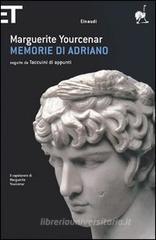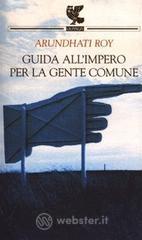Anno di prima pubblicazione: 1849-50
Genere: romanzo, bildungsroman (romanzo di formazione)
Paese: Regno Unito
David Copperfield è uno di quei libri che tutti dovrebbero aver letto durante la loro formazione letteraria, ma che nessuno si prende più la briga di leggere. Quindi ho preso in mano questo tomone ed ho cominciato a leggere.
A dir la verità mi mette sempre un po’ paura scrivere sui capisaldi della letteratura mondiale, quindi non considero quello che scrivo come una vera e propria recensione, ma piuttosto come uno buttare per iscritto i pensieri sul libro appena letto (beh, non proprio appena letto, ho accumulato un bel po’ di libri di cui parlare). Non ho per nulla l’ambizione di scrivere un pezzo accademico, quindi mi permetto pure di dire scorrettezze e sciocchezze.
Il protagonista, di nome David Copperfield, ci viene presentato alla maniera che ha reso famoso Charles Dickens, cioè iniziando da quando è nato – con un capitolo intitolato “Vengo al mondo”! - e parlandoci per molte pagine dei suoi genitori e della sua famiglia. Si tratta di quello stesso metodo di cui Salinger, anzi di cui il giovane Holden, si burlerà all’inizio del suo celeberrimo romanzo. Ma questo è avvenuto molti anni dopo. Noi siamo ancora nella fumosa Londra del milleottocento e vattelapesca.
La parte più bella è senz’altro l’inizio, quando David è bambino e viene sballottato un po’ da un posto all’altro come Oliver Stone (anche se ci sono un po’ troppe coincidenze forzate in una parte del romanzo). La storia poi prosegue con l’adolescenza e la maturità del signor Copperfield, la sua vita sentimentale e quella professionale, che inevitabilmente è meno interessante e rocambolesca. D’altronde si sa che molti episodi del romanzo sono tratti dalla vita dell’autore, che come tutte le vite non può essere stata sempre avventurosa. L’attenzione si sposta da David al mondo che lo circonda e a tutta una serie di personaggi a dir poco formidabili.
Ci sono personaggi quasi farseschi, con dei tic e delle manie assurde, ma sempre inseriti con la più pura naturalezza. Per esempio Dick, che sta scrivendo il suo memoriale ma è un po’ “tocco” ed è ossessionato dal problema della testa di Re Carlo I, che continua a venir fuori nei momenti più inaspettati, come in un perenne delirio. Poi c’è la zia Betsey Trotwood, che quando scopre che la neonata nipote è in realtà un nipote scappa di casa arrabbiata e continua per anni a riferirsi alla nipote mai nata come se fosse sempre esistita. Inoltre è ossessionata dall’idea che Londra possa andare a fuoco tutte le notti e vuole dormire in una camera che dia sulla scala antincendio. E’ una donna di carattere e striglia Uriah Heep per i suoi contorcimenti da anguilla in un modo memorabile. Quest’ultimo, Uriah Heep, è una delle caricature più riuscite di tutto il romanzo: così viscido e antipatico da far rizzare i capelli. E’ risaputo che nei romanzi di Dickens ci sono personaggi a tutto tondo, come David, e personaggi piatti come Mr Creakle o Mr Murderstone, ma questi ultimi non hanno nulla da invidiare a quelli diciamo più credibili, anzi. La forza di questo romanzo di Dickens sta non solo nella critica sociale (del lavoro minorile, per esempio), ma anche e soprattutto nella forza dei suoi “flat characters”, che proprio a causa delle loro ossessioni e fissazioni sono i più memorabili. Per la cronaca, non sono molto d’accordo con E.M. Forster quando diceva che bisogna assolutamente creare personaggi a tutto tondo: io mi sono goduta soprattutto le varie signore Micawber che non diserteranno mai il proprio marito, ma che comunque ci pensano di continuo.
Un po’ troppo prevedibile il finale, che non vi svelo per correttezza, ma cosa volete: non tutte le ciambelle, neanche quelle dickensiane, escono col buco.
Sull’autore: Charles Dickens nacque nel 1812 vicino a Portsmouth, in Inghilterra. La famiglia si sposta molto e, fortemente impoverita, è costretta a trasferirsi a Camden Town, allora uno dei quartieri più poveri di Londra. Il padre di Dickens venne arrestato per debiti e Charles lavorò per periodo in una fabbrica. Lavorò anche come praticante in un studio di avvocati, ma abbandonò presto la professione. Iniziò a scrivere bozzetti di vita urbana con lo pseudonimo di Boz e in seguito a pubblicare romanzi a puntate mensili il primo dei quali è I Quaderni Postumi del Circolo Pickwick (1836). Il romanzo ebbe un grande successo e Dickens scrisse numerosi altri romanzi a puntate, tra cui Oliver Twist (1837) e David Copperfield (1849-50). Divenne presto uno dei romanzieri più popolari dell’era vittoriana. Uno dei temi ricorrenti nei suoi romanzi è quello della riforma sociale: le sue descrizioni delle tribolazioni della classe operaia di Londra lo hanno reso famoso. I suoi romanzi hanno inoltre dato vita ad alcuni tra i più personaggi icona della letteratura inglese, da Ebenezer Scrooge a Tiny Tim, passando per Uriah Heep e Fagin. Da Grandi Speranze (1861) a Casa Desolata (1852-53), tutti i suoi libri sono diventati dei classici della letteratura inglese.
Genere: romanzo, bildungsroman (romanzo di formazione)
Paese: Regno Unito
David Copperfield è uno di quei libri che tutti dovrebbero aver letto durante la loro formazione letteraria, ma che nessuno si prende più la briga di leggere. Quindi ho preso in mano questo tomone ed ho cominciato a leggere.
A dir la verità mi mette sempre un po’ paura scrivere sui capisaldi della letteratura mondiale, quindi non considero quello che scrivo come una vera e propria recensione, ma piuttosto come uno buttare per iscritto i pensieri sul libro appena letto (beh, non proprio appena letto, ho accumulato un bel po’ di libri di cui parlare). Non ho per nulla l’ambizione di scrivere un pezzo accademico, quindi mi permetto pure di dire scorrettezze e sciocchezze.
Il protagonista, di nome David Copperfield, ci viene presentato alla maniera che ha reso famoso Charles Dickens, cioè iniziando da quando è nato – con un capitolo intitolato “Vengo al mondo”! - e parlandoci per molte pagine dei suoi genitori e della sua famiglia. Si tratta di quello stesso metodo di cui Salinger, anzi di cui il giovane Holden, si burlerà all’inizio del suo celeberrimo romanzo. Ma questo è avvenuto molti anni dopo. Noi siamo ancora nella fumosa Londra del milleottocento e vattelapesca.
La parte più bella è senz’altro l’inizio, quando David è bambino e viene sballottato un po’ da un posto all’altro come Oliver Stone (anche se ci sono un po’ troppe coincidenze forzate in una parte del romanzo). La storia poi prosegue con l’adolescenza e la maturità del signor Copperfield, la sua vita sentimentale e quella professionale, che inevitabilmente è meno interessante e rocambolesca. D’altronde si sa che molti episodi del romanzo sono tratti dalla vita dell’autore, che come tutte le vite non può essere stata sempre avventurosa. L’attenzione si sposta da David al mondo che lo circonda e a tutta una serie di personaggi a dir poco formidabili.
Ci sono personaggi quasi farseschi, con dei tic e delle manie assurde, ma sempre inseriti con la più pura naturalezza. Per esempio Dick, che sta scrivendo il suo memoriale ma è un po’ “tocco” ed è ossessionato dal problema della testa di Re Carlo I, che continua a venir fuori nei momenti più inaspettati, come in un perenne delirio. Poi c’è la zia Betsey Trotwood, che quando scopre che la neonata nipote è in realtà un nipote scappa di casa arrabbiata e continua per anni a riferirsi alla nipote mai nata come se fosse sempre esistita. Inoltre è ossessionata dall’idea che Londra possa andare a fuoco tutte le notti e vuole dormire in una camera che dia sulla scala antincendio. E’ una donna di carattere e striglia Uriah Heep per i suoi contorcimenti da anguilla in un modo memorabile. Quest’ultimo, Uriah Heep, è una delle caricature più riuscite di tutto il romanzo: così viscido e antipatico da far rizzare i capelli. E’ risaputo che nei romanzi di Dickens ci sono personaggi a tutto tondo, come David, e personaggi piatti come Mr Creakle o Mr Murderstone, ma questi ultimi non hanno nulla da invidiare a quelli diciamo più credibili, anzi. La forza di questo romanzo di Dickens sta non solo nella critica sociale (del lavoro minorile, per esempio), ma anche e soprattutto nella forza dei suoi “flat characters”, che proprio a causa delle loro ossessioni e fissazioni sono i più memorabili. Per la cronaca, non sono molto d’accordo con E.M. Forster quando diceva che bisogna assolutamente creare personaggi a tutto tondo: io mi sono goduta soprattutto le varie signore Micawber che non diserteranno mai il proprio marito, ma che comunque ci pensano di continuo.
Un po’ troppo prevedibile il finale, che non vi svelo per correttezza, ma cosa volete: non tutte le ciambelle, neanche quelle dickensiane, escono col buco.
Sull’autore: Charles Dickens nacque nel 1812 vicino a Portsmouth, in Inghilterra. La famiglia si sposta molto e, fortemente impoverita, è costretta a trasferirsi a Camden Town, allora uno dei quartieri più poveri di Londra. Il padre di Dickens venne arrestato per debiti e Charles lavorò per periodo in una fabbrica. Lavorò anche come praticante in un studio di avvocati, ma abbandonò presto la professione. Iniziò a scrivere bozzetti di vita urbana con lo pseudonimo di Boz e in seguito a pubblicare romanzi a puntate mensili il primo dei quali è I Quaderni Postumi del Circolo Pickwick (1836). Il romanzo ebbe un grande successo e Dickens scrisse numerosi altri romanzi a puntate, tra cui Oliver Twist (1837) e David Copperfield (1849-50). Divenne presto uno dei romanzieri più popolari dell’era vittoriana. Uno dei temi ricorrenti nei suoi romanzi è quello della riforma sociale: le sue descrizioni delle tribolazioni della classe operaia di Londra lo hanno reso famoso. I suoi romanzi hanno inoltre dato vita ad alcuni tra i più personaggi icona della letteratura inglese, da Ebenezer Scrooge a Tiny Tim, passando per Uriah Heep e Fagin. Da Grandi Speranze (1861) a Casa Desolata (1852-53), tutti i suoi libri sono diventati dei classici della letteratura inglese.



